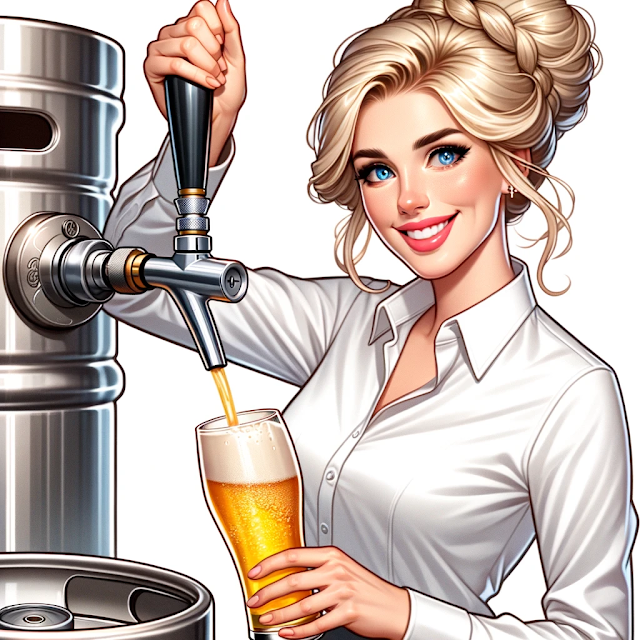The art of brewing beer has evolved over millennia, and one ingredient that has stood the test of time is honey. While the use of honey in brewing might seem ancient, its application in modern-day brewing remains as intriguing and beneficial as ever.
Another fascinating aspect of adding honey to your beer is its potential to elevate the alcohol content (ABV). As honey ferments, it breaks down into alcohol, thereby increasing the beer's overall ABV. This makes honey a dual-purpose ingredient, enhancing both flavor and potency.
For beginners, it's tempting to experiment with various types of honey, including wild honey from local suppliers. While wild honey can bring distinct flavors, it also poses risks. Wild honey might introduce unwanted bacteria, which could potentially interfere with the yeast during fermentation.
This article delves deep into the world of incorporating honey into your beer brewing process, its effects, and the considerations you need to keep in mind.
Using honey to brew beer is a practice that dates back centuries. The addition of bee honey to one's homebrew not only imparts unique aromas but also enriches the flavor profile of the beer. However, it's crucial to distinguish between beer brewed with honey and mead.
Honey and Beer: An Age-Old Affair
Using honey to brew beer is a practice that dates back centuries. The addition of bee honey to one's homebrew not only imparts unique aromas but also enriches the flavor profile of the beer. However, it's crucial to distinguish between beer brewed with honey and mead.
While mead is a beverage made entirely from honey, adding honey to beer results in a concoction known as a "braggot." Although braggots share some characteristics with mead, their primary distinction lies in the brewing process and the balance of ingredients.
The Role of Honey in Boosting ABV
Another fascinating aspect of adding honey to your beer is its potential to elevate the alcohol content (ABV). As honey ferments, it breaks down into alcohol, thereby increasing the beer's overall ABV. This makes honey a dual-purpose ingredient, enhancing both flavor and potency.
Choosing the Right Honey: Quality Over Exoticism
For beginners, it's tempting to experiment with various types of honey, including wild honey from local suppliers. While wild honey can bring distinct flavors, it also poses risks. Wild honey might introduce unwanted bacteria, which could potentially interfere with the yeast during fermentation.
Moreover, specific regions, like New Zealand where this author resides, face challenges with honey contaminants such as Tutin, which can be toxic. Therefore, for safety and consistency, it's advisable to use standard, high-quality honey that you'd confidently consume or serve to your family.
When it comes to adding honey to your brew, timing is of the essence. Typically, brewers introduce honey after mixing in other essential ingredients like malt extract, hops, and DME. To ensure the smooth incorporation of honey, consider warming it slightly, ensuring it remains below boiling point. This softening technique allows honey to blend seamlessly into the fermenter.
Incorporating Honey into the Brewing Process
When it comes to adding honey to your brew, timing is of the essence. Typically, brewers introduce honey after mixing in other essential ingredients like malt extract, hops, and DME. To ensure the smooth incorporation of honey, consider warming it slightly, ensuring it remains below boiling point. This softening technique allows honey to blend seamlessly into the fermenter.
If you're conducting a boil, adding honey as the wort cools (around 160°F or below) might help preserve its innate flavor.
The amount of honey to use largely depends on personal preference and the desired outcome. Some brewers suggest that honey can constitute anywhere from 2% to 10% of the total wort. Others believe that up to 50% of the fermentable sugars can be derived from honey.
Determining the Right Quantity of Honey
The amount of honey to use largely depends on personal preference and the desired outcome. Some brewers suggest that honey can constitute anywhere from 2% to 10% of the total wort. Others believe that up to 50% of the fermentable sugars can be derived from honey.
It's essential to strike a balance, as excessive honey might prolong fermentation and impart a more mead-like taste to the beer.
Different kinds of honey possess distinct characteristics. While any supermarket variety can suffice, maltier honeys tend to accentuate the honey flavor in the beer. However, if you opt for a honey-rich brew, consider increasing the bittering hops to counterbalance the heightened sweetness. This adjustment can ensure a harmonious flavor profile and prevent an overly dry mouthfeel.
Yes, you read that right!
Selecting the Ideal Honey Variety
Different kinds of honey possess distinct characteristics. While any supermarket variety can suffice, maltier honeys tend to accentuate the honey flavor in the beer. However, if you opt for a honey-rich brew, consider increasing the bittering hops to counterbalance the heightened sweetness. This adjustment can ensure a harmonious flavor profile and prevent an overly dry mouthfeel.
Honey as a Carbonating Agent for secondary fermentation
Yes, you read that right!
Honey can indeed be employed to carbonate beer during bottle conditioning. However, moderation is key. Overdoing the honey might trigger excessive secondary fermentation, leading to over-carbonated beer, often termed "gusher" beer.



